|
|
Post by Peter Lewis on Jan 19, 2016 17:27:08 GMT 12
Saves having to clean the dead flies out of the cockpit!
|
|
|
|
Post by Peter Lewis on Jan 19, 2016 19:21:40 GMT 12
The Caudron C.60 was a French two-seat biplane of the 1920s and 1930s. Although handicapped by being powered by the Clerget 9B rotary engines (as fitted to the Sopwith Camel) thus making it a bit of a beast, it saw service as a basic trainer in France, Finland, Latvia, Spain and Venezuela. The 1921 Michelin Cup for the fastest time over a (3,000 km {1,860 mi) circuit of France was won by a C.60 flown by Alphonse Poiré, with a time of 371⁄4 hours.  The Farman Moustique (in English, Mosquito) is a family of French monoplanes built by the Société des Aéroplanes Henry et Maurice Farman, starting in 1919. Early versions were low powered single seat monoplanes, what we would call today motor gliders. The design was revived, over 17 years after its first appearance, as the F 450 Moustique and was one of the aircraft purchased by the French government as part of l'Aviation Populaire programme. The production version, the F 451 Moustique, had a 25 hp (19 kW) AVA 4 Aoo flat twin two stroke. To make the Moustique attractive to the hunting fraternity, Farman advertised an optional rear locker "for the transport of a dog"! The last Moustique development was the two seat F 455 Super Moustique, initially called the Moustique III, which first flew in 1936. Its span was increased and it had a more powerful 35 hp (26 kW) Mengin 2 A-01 engine. Only one was built; its performance in the climb was poor, but in any case the light aircraft section of the Farman works was shut down when the company was nationalised in March 1937. This is the aircraft shown here:  |
|
|
|
Post by nuuumannn on Jan 21, 2016 17:38:35 GMT 12
Good pictures; it has been a long time since I was last at Le Bourget and it looks like it hasn't changed much.
A few side notes; The Voisin IIILA was used by No.3 Sqn RNAS at Imbros during the Dardanelles campaign. It was one of the better aircraft available for bombing work by C.R. Samson.
There is a full size reproduction of a Junkers D 1 monoplane at the Luftwaffen Museum at Gatow.
Peter, you're getting yourself confused between airship designations between the two services. The LZ 113 at Le Bourget was an army airship, which indeed did as the placard states; it's manufacturer's designation was LZ 83. The navy operated manufacturers' designated LZ 113, but it served as L 71. It is this ship that did not see action in the war, going to the Beardmore airship works at Inchinnan in Scotland, where it was scrapped to make way for the repair of the British R.36. This ship had Maybach engines from L 71 fitted to it.
Airships were always known by their tactical designations in service, for example, LZ 76 was the infamous L 33, which New Zealander Alfred de Bathe Brandon tangled with on the night of 24 September 1916. Incidentally, L 33 and LZ 113 were of the same class of ship; the 'R' Class of Zeppelin, whereas the navy L 71 was 'X' Class.
|
|
|
|
Post by Peter Lewis on Jan 21, 2016 21:09:28 GMT 12
Thanks for the clarification.
|
|
|
|
Post by Peter Lewis on Jan 21, 2016 21:23:22 GMT 12
The Breguet 19 (Breguet XIX, Br.19 or Bre.19) was a light bomber and reconnaissance aircraft produced from 1924 as a replacement for the Bre.14 (shown earleir in this thread). The first 11 Breguet 19 prototypes were powered by a number of different engines. A "trademark" of Breguet was the wide usage of duralumin as a construction material, instead of steel or wood. At that time, the aircraft was faster than other bombers, and even some fighter aircraft. Therefore, it met with a huge interest in the world, strengthened by its sporting successes. Mass production, for the Aéronautique Militaire and export, started in France in 1924. In total, more than 2,000 Breguet 19s were manufactured in France, and about 700 license-built by Spanish CASA, Japanese Nakajima, Belgian SABCA and the Yugoslavian aircraft factory in Kraljevo. There were a number of different versions. The Br.19 GR (Grand Raid) was a variant specially modified for long-distance flights. after early long-range attempts were made with the regular Br.19 A2 no.23 fitted with additional fuel tanks. In 1926 three aircraft (no.1685 to 1687) were modified to Br.19 GR 3000 litres specifications. They had larger fuel tanks fitted in the fuselage, with a total capacity of about 2,900 to 3,000 l (770 to 790 US gal; 640 to 660 imp gal). The cockpit was moved slightly aft, and the wingspan was increased to 14.83 m (48.7 ft). The three aircraft were fitted with different engines: the first one (no.1685) had a 370 kW (500 hp) Hispano-Suiza 12Hb. In 1927, no.1685 received a new 450 kW (600 hp) Hispano 12Lb engine, its fuel capacity was extended to 3,500 l (920 US gal; 770 imp gal) and its wingspan was further increased by 1 m (3.3 ft). It was christened Nungesser et Coli after the two airmen who disappeared in a transatlantic flight attempt in May 1927. From 10 October 1927 – 14 April 1928, Costes and Le Brix flew this Br.19 GR around the world, covering 57,000 km (35,000 mi) - though the journey between San Francisco and Tokyo was taken by ship. The signeage painted on the aircraft reflects their ports of call. 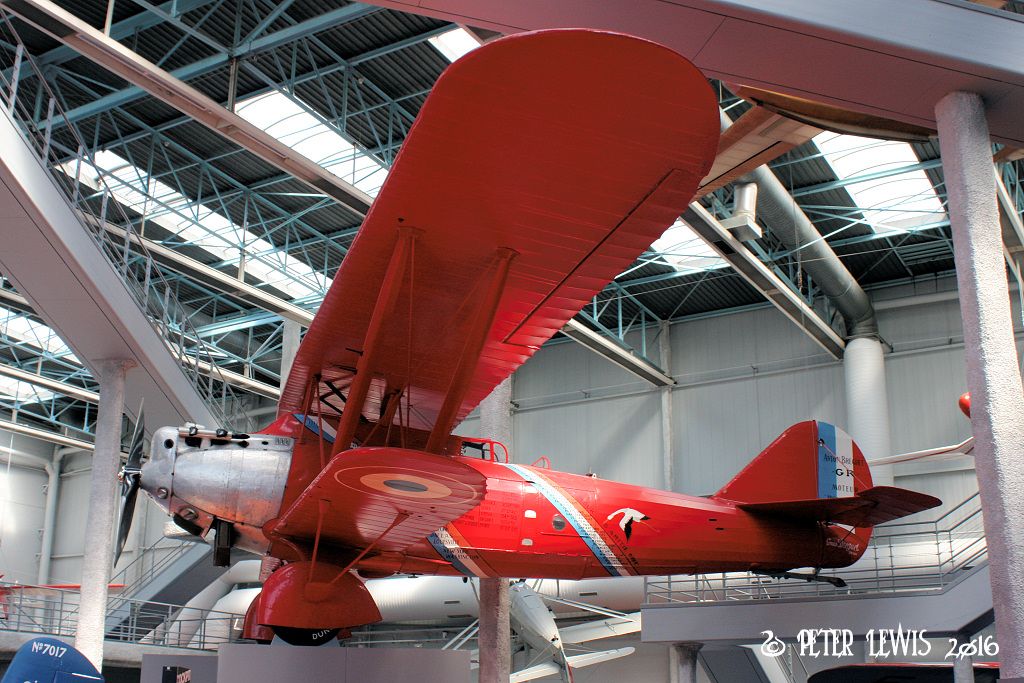 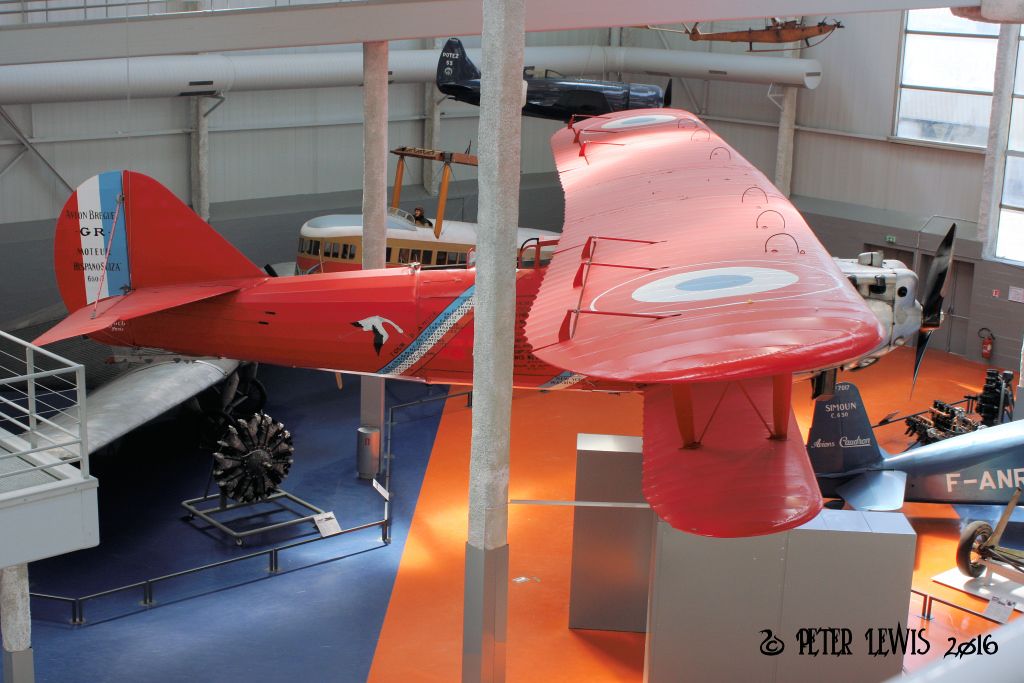 The Potez 53 was a racing aircraft built in France by Potez to compete for the Coupe Deutsch de la Meurthe in 1933. The aircraft were powered by a supercharged nine-cylinder Potez 9B radial engine driving a two-bladed fixed pitch propeller. The engine was specially designed for the competition, which called for engines of less than 8 litres (490 cu in) displacement. Two machines were entered for the 1933 Coupe Deutsch de la Meurthe. The first (racing no.10) was flown by Georges Détré, who won first place, covering the 2,000 km (1,200 mi) closed-circuit course with an average speed of 323 km/h (201 mph). 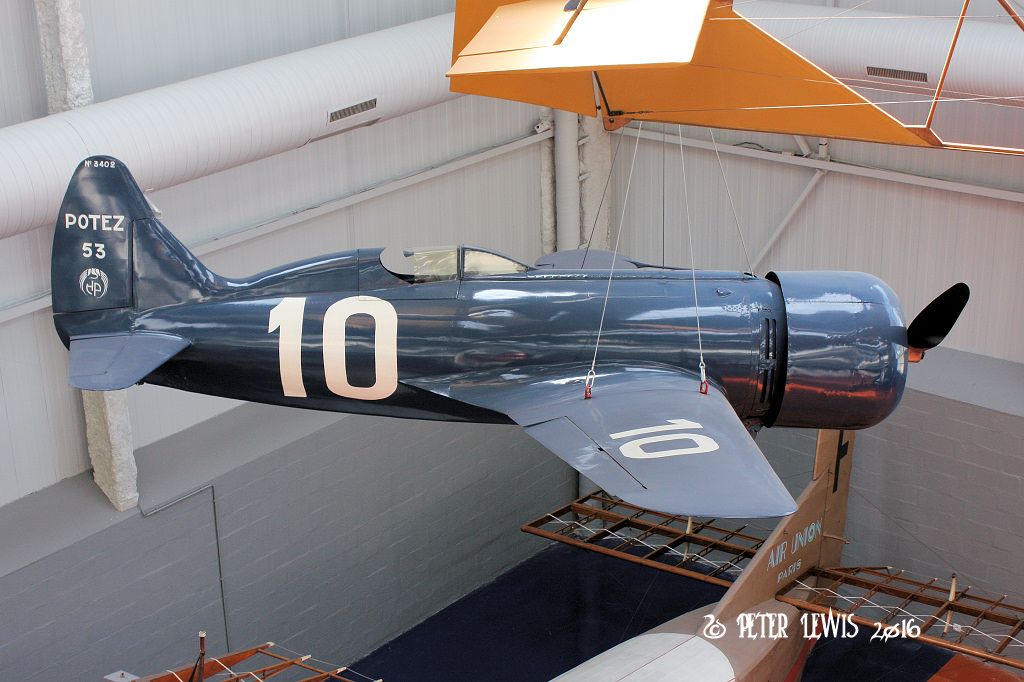 |
|
|
|
Post by Peter Lewis on Jan 24, 2016 23:22:30 GMT 12
Finishing off in the between-the-wars pavillion, the Dewoitine D.530 was a development of the 1928-era Dewoitine D.27. The D.53 was a strengthened version. This particular aircraft was flown by Marcel Doret, the Dewoitine test pilot, from 1927 until 1955. 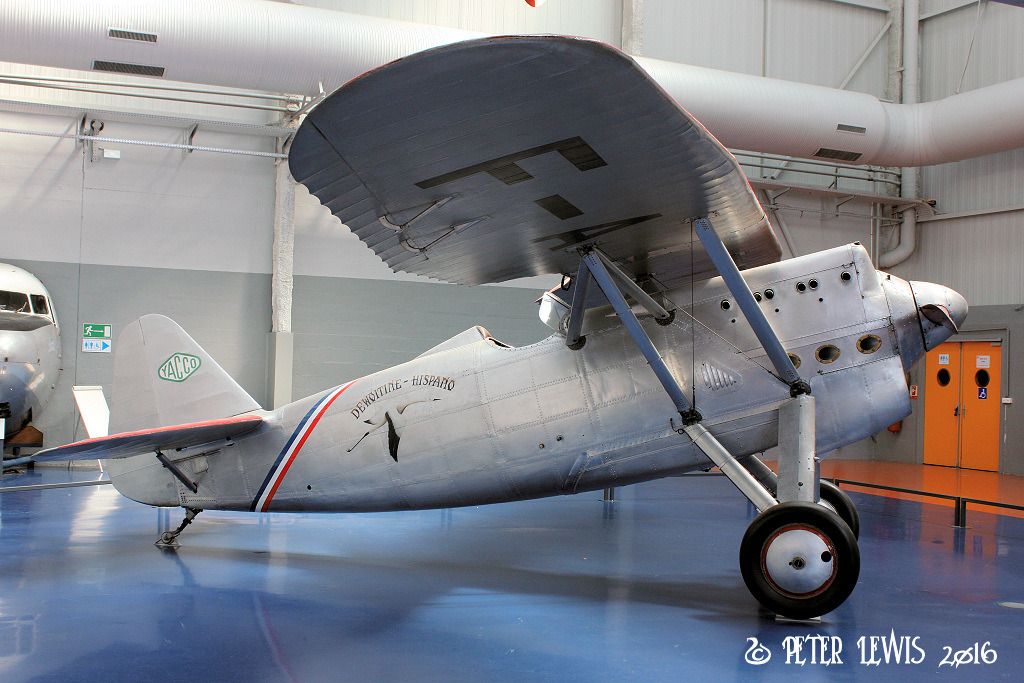 The Potez 43 was a family of French light utility and sports aircraft, developed in early 1930s. They were three-seat single-engine high-wing monoplanes. This Potez 437 is a modified version with 89 kW (120 hp) Renault 4Pdi engine. 9 built, of which the first flew on 17 July 1934. 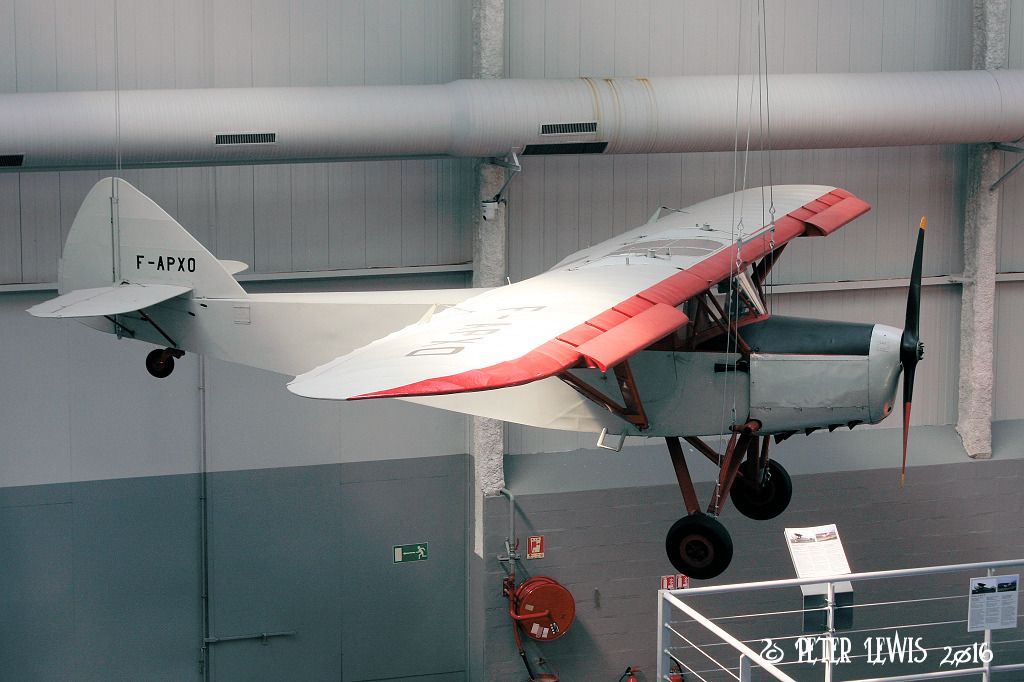 I have no idea of the identity of this single seat primary glider, but it looks cool. 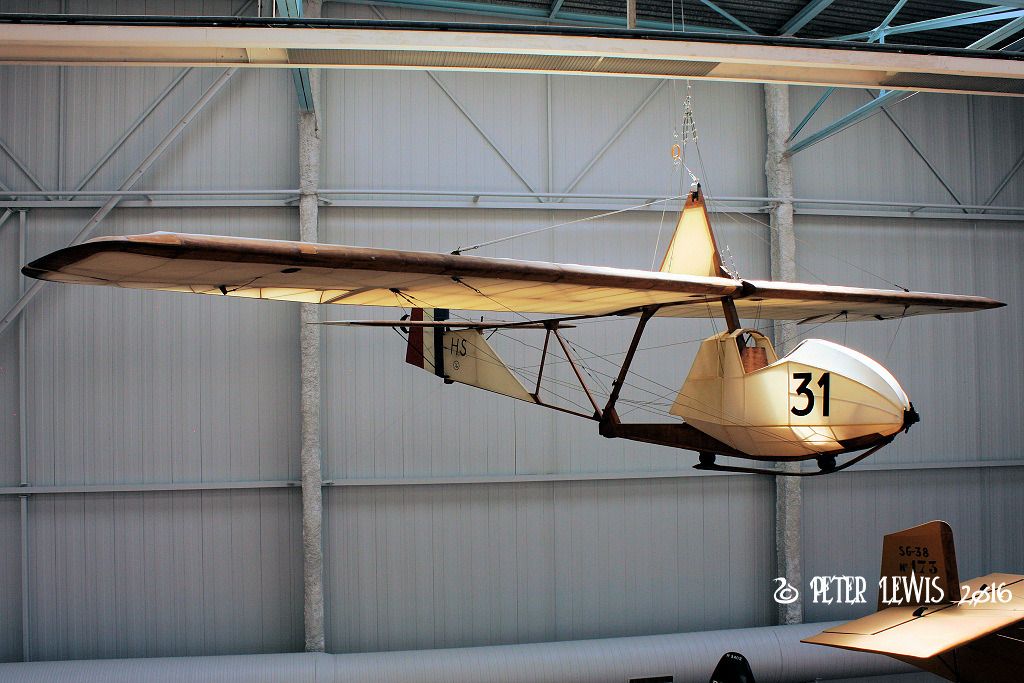 |
|
|
|
Post by Brett on Jan 25, 2016 6:26:21 GMT 12
The glider is a Schneider Grunau SG-38 Schulgleiter (DFS 108-14). Schulgleiter translates to School Glider, the term used for a primary trainer.
This one differs slightly from most others on display around the world in that it has a pod for the pilot, rather than just a seat on the keel with the pilot out in the breeze.
|
|
|
|
Post by Peter Lewis on Jan 25, 2016 8:38:02 GMT 12
Thanks for that.
I knew we'd have an expert here somewhere, rather than me trying to guess.
|
|
|
|
Post by Peter Lewis on Jan 25, 2016 21:50:27 GMT 12
After leaving this hall of magnificence we took a quick peek at the Concorde hangar. This contains Concorde 001 F-WTSS (arrived October 1973) and 213 F-BTSD (arrived June 2003). There were queues for both of these aircraft and they are a bit jet-airlinery for my taste, so we did not tarry there. Outside, blinking in the unaccustomed daylight, we found two more modern examples of european aviation design: The SEPECAT Jaguar was one of the first major joint-Anglo-French military aircraft programs. The aircraft served with the French Air Force as the main strike/attack aircraft until 1 July 2005, and with the Royal Air Force until the end of April 2007. The Jaguar E shown here was the two-seat type conversion variant. 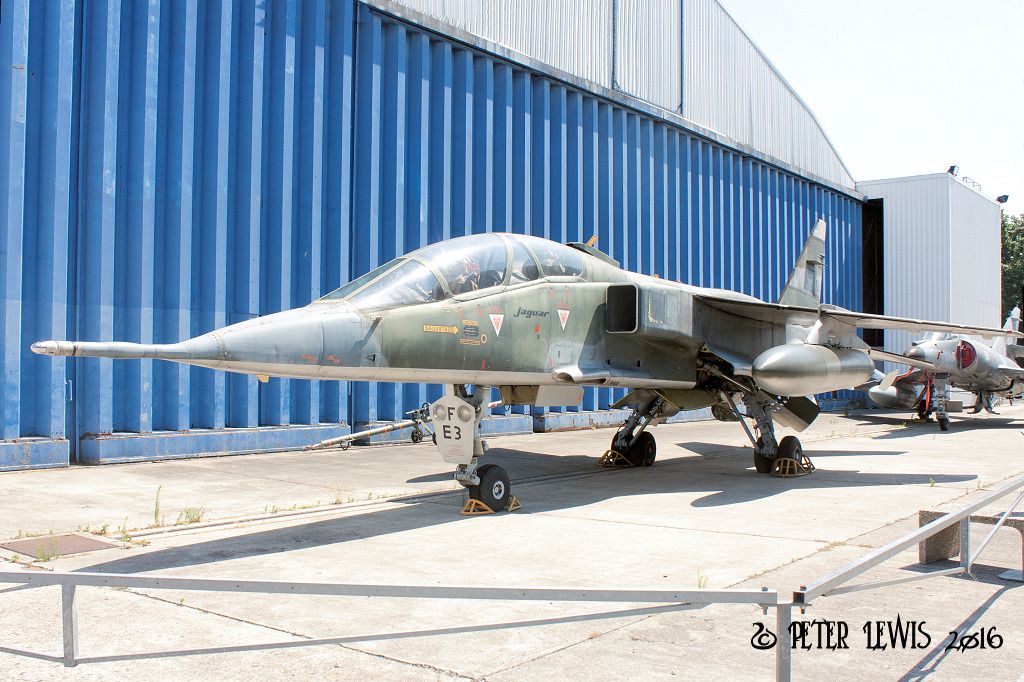 The Dassault-Breguet Super Étendard is a French carrier-borne strike fighter aircraft for service with the French Navy. The aircraft is an advanced development of the Étendard IVM. The Super Étendard first flew in October 1974 and entered French service in June 1978. French Super Étendards have served in several conflicts such as the Kosovo War, the War in Afghanistan and the military intervention in Libya. 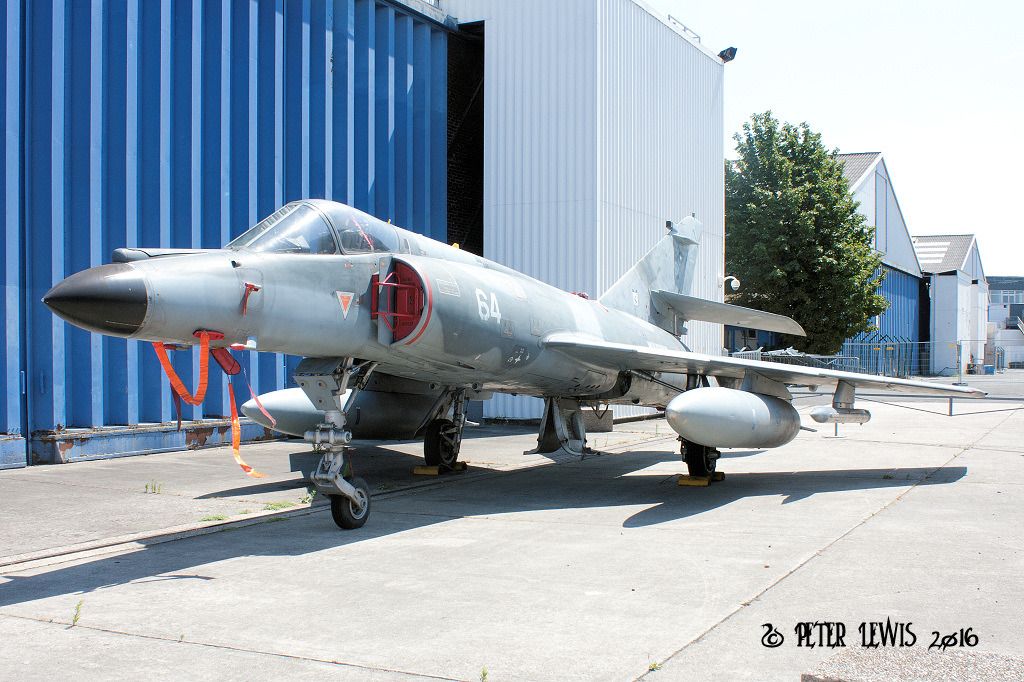 By this time we were getting pretty weary and still had quite a major bus/metro trip back to our Paris city-centre hotel. Having seen most of what was both open and interesting, we regretfully trudged away. The Musée de l'Air et de l'Espace certainly lives up to its reputation as one of the greatest aviation museums in the world. If you are ever in Paris, go. |
|
|
|
Post by harvard1041 on Jan 26, 2016 5:39:01 GMT 12
Great thread Peter - and indeed one of the worlds best aviation museums - thank you  Over the back of the airfield at Le Bourget are also the Musee de l'Air Workshops ( where the various new & redone display aircraft are worked on), the eclectic collection of aircraft of the 'Alies Anciennes' - here's a link www.wolverhamptonaviationgroup.co.uk/trip_paris-lebourget_dugny.htm but also the workshops of the group affiliated with the flying aircraft down at La Ferte Alais. Some of the guys work for the museum during the week and then continue on thru the weekend - a neat group. They don't really run tours, but have visited a couple of times over the years - always welcome and some neat machines being worked on - a couple of photos.    |
|
|
|
Post by Brett on Jan 26, 2016 6:59:58 GMT 12
As Peter said, the Concorde Hangar contains - Concordes. They are parked facing each other, and you can go inside them for an additional fee. F-WTSS (the first prototype)  F-BTSD  |
|
|
|
Post by Deleted on Jan 26, 2016 13:22:14 GMT 12
So very pretty. How I wish I'd seen a Concorde fly.
Great photos everyone!
harvard1041 - that blue and white striped Albatros will be a real eyecatcher! I don't envy all that masking, though.
|
|
|
|
Post by obiwan27 on Jan 27, 2016 10:54:17 GMT 12
|
|
|
|
Post by shorty on Feb 15, 2016 16:31:59 GMT 12
I thought O would post just a few photos from my visit there to complement Peters collection, I won't duplicated Peters shots , just exhibits that may not have been on display when he was there or views from a different angle Starting with the DH 9  Then a Morane Saulnier MS 317 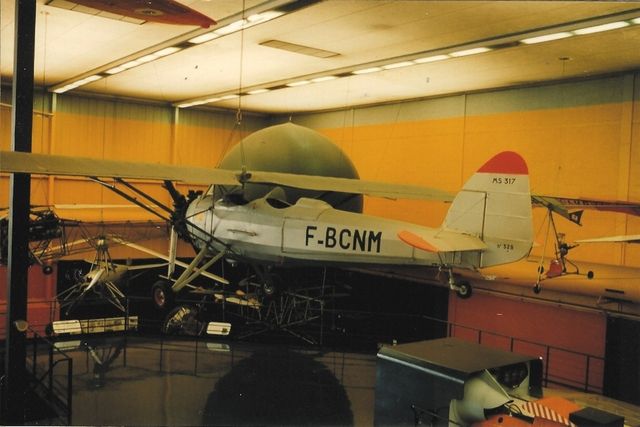 Followed by shots of the two autogyros  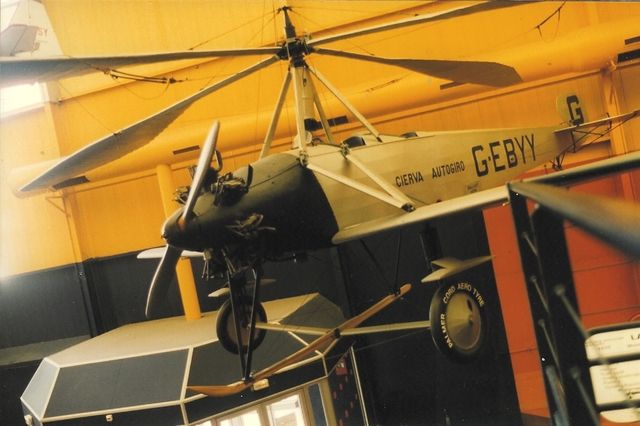 More later |
|
|
|
Post by errolmartyn on Feb 15, 2016 18:14:32 GMT 12
Shorty,
Your first phot is actually of a DH.9.
Errol
|
|
|
|
Post by shorty on Feb 15, 2016 18:23:15 GMT 12
Oops. senior moment, Corrected now. thanks
|
|
|
|
Post by nuuumannn on Feb 17, 2016 12:55:45 GMT 12
Was the prototype hangar closed? Some of the most interesting aircraft in there; Leduc ramjets, Mirage Balzac V/TOL, the first French jet powered aircraft etc...
|
|
|
|
Post by shorty on Feb 20, 2016 8:36:13 GMT 12
|
|
|
|
Post by ErrolC on Feb 20, 2016 14:25:51 GMT 12
Thanks Peter, enjoyable as always. I visited on a cool September day in 2012, the day before we got on a A380 to arrive in AKL at 2330 the night before the Mosquito Show. Arrived in our Paris hotel from Luxembourg at lunchtime, was a bit holiday-ed out, and I see I only stayed a couple of packed hours. Well worth it however. I too will add some complimentary shots. Some are a bit noisy, I was using a D40 (6MP DSLR), and the weather was rather mainly rather grey. I enjoyed this diorama of a Saconney Kite being launched. Their observation role was taken over by ballons. 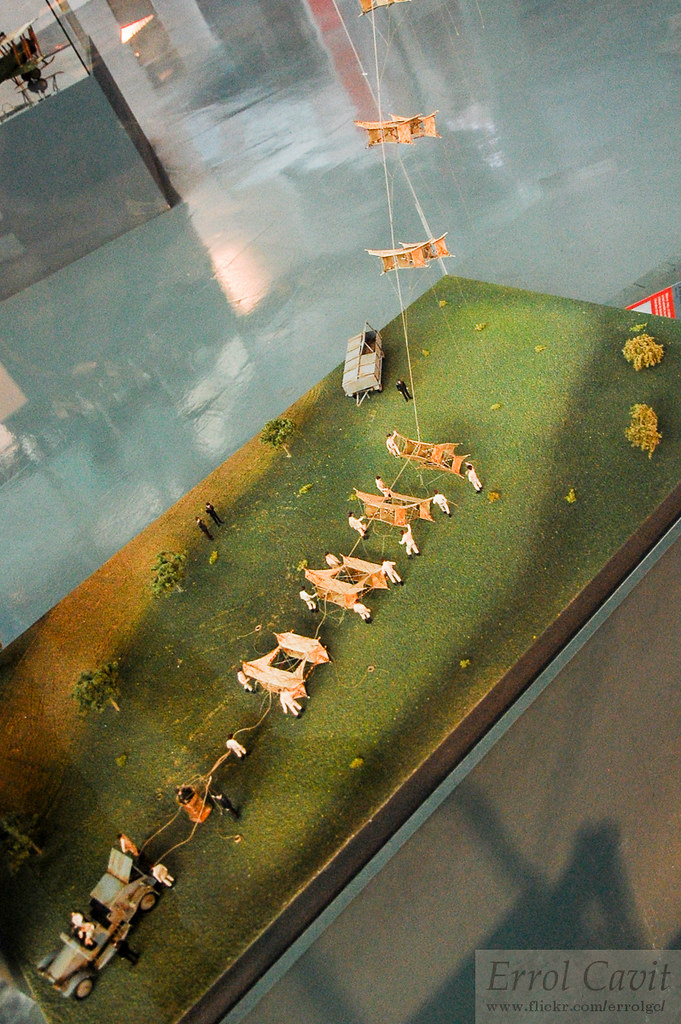 Saconney Kite Train Diorama Saconney Kite Train Diorama by Errol Cavit, on Flickr I assume that this CASA 2.111D (H-111), then in the WW2 Hall, is currently in storage or under restoration. 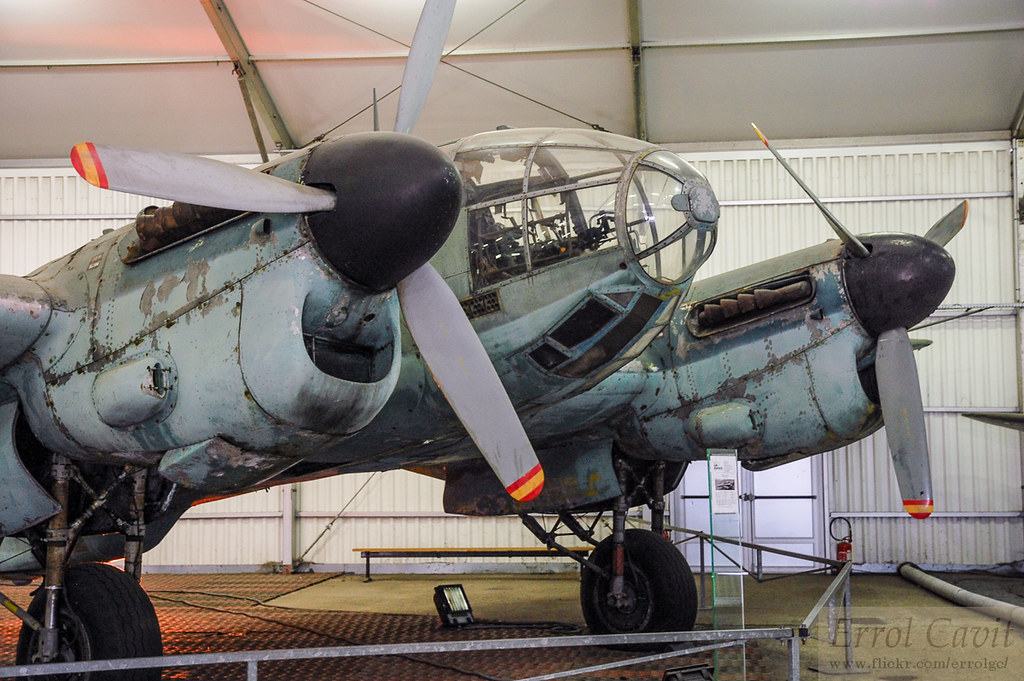 "H-111" in WW2 Hall "H-111" in WW2 Hall by Errol Cavit, on Flickr More French post-war aircraft  French Roundel French Roundel by Errol Cavit, on Flickr Some weird and wonderful prototypes 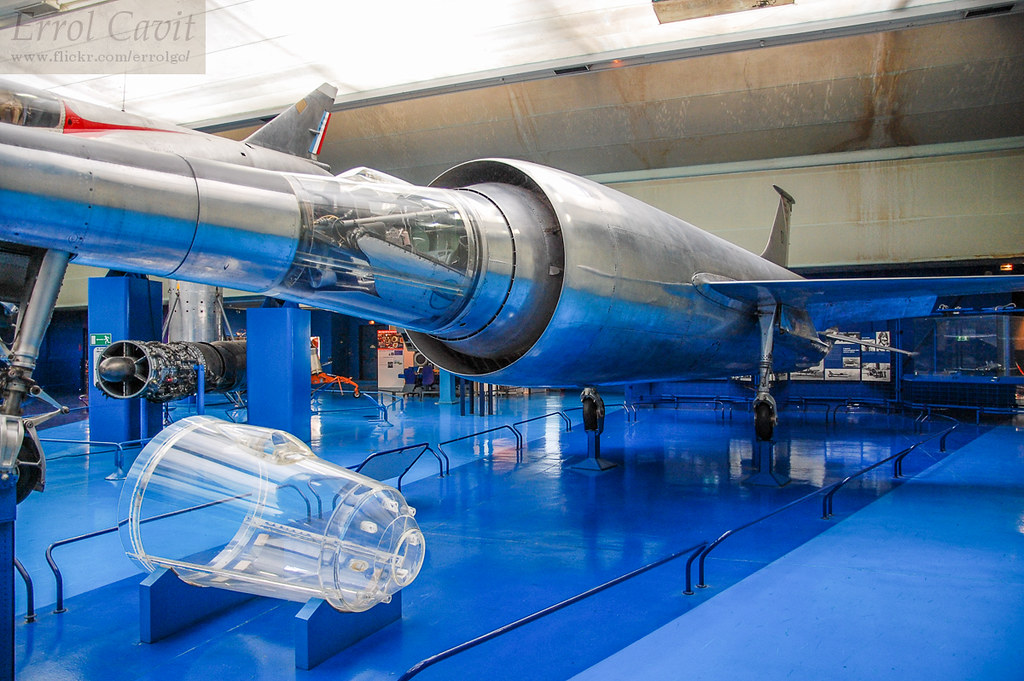 Leduc 0.22 prototype Leduc 0.22 prototype by Errol Cavit, on Flickr 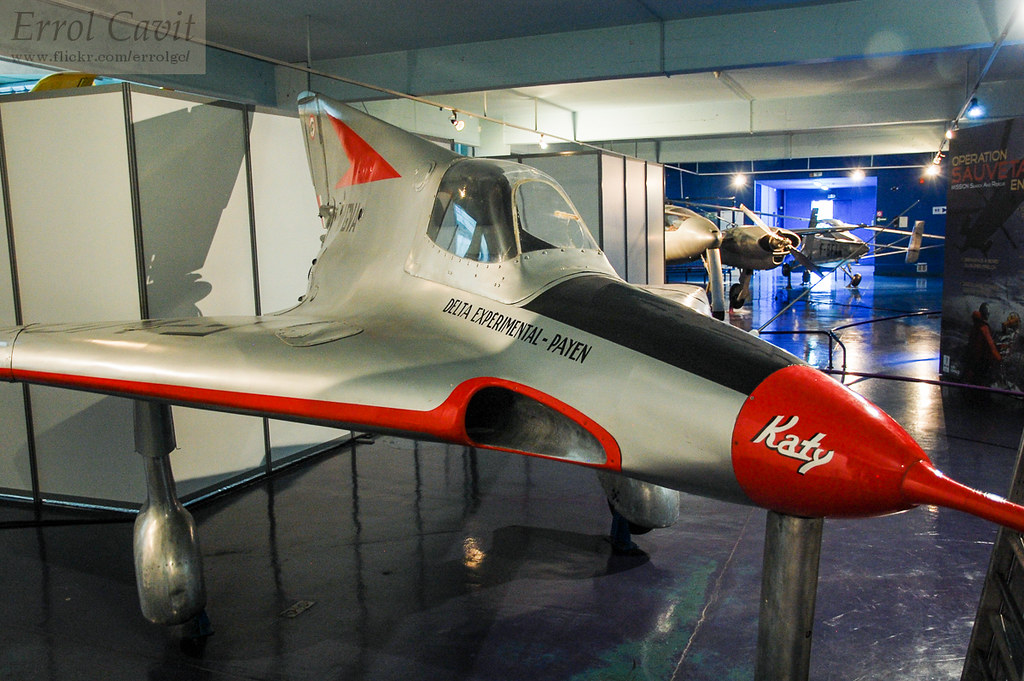 Payen 49 swept delta Payen 49 swept delta by Errol Cavit, on Flickr 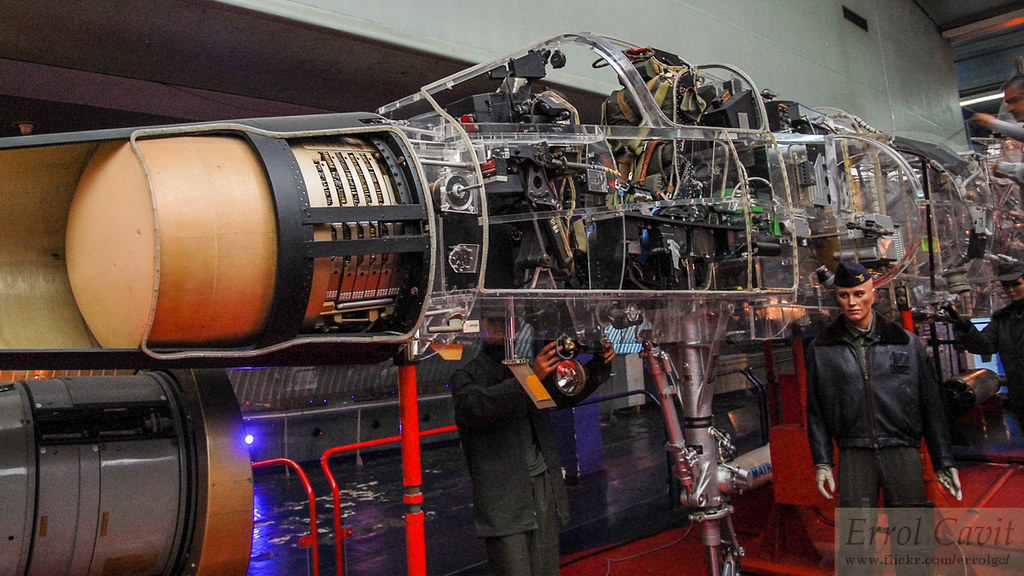 Mirage F.1 mockup on display Mirage F.1 mockup on display by Errol Cavit, on Flickr Maritime History outside 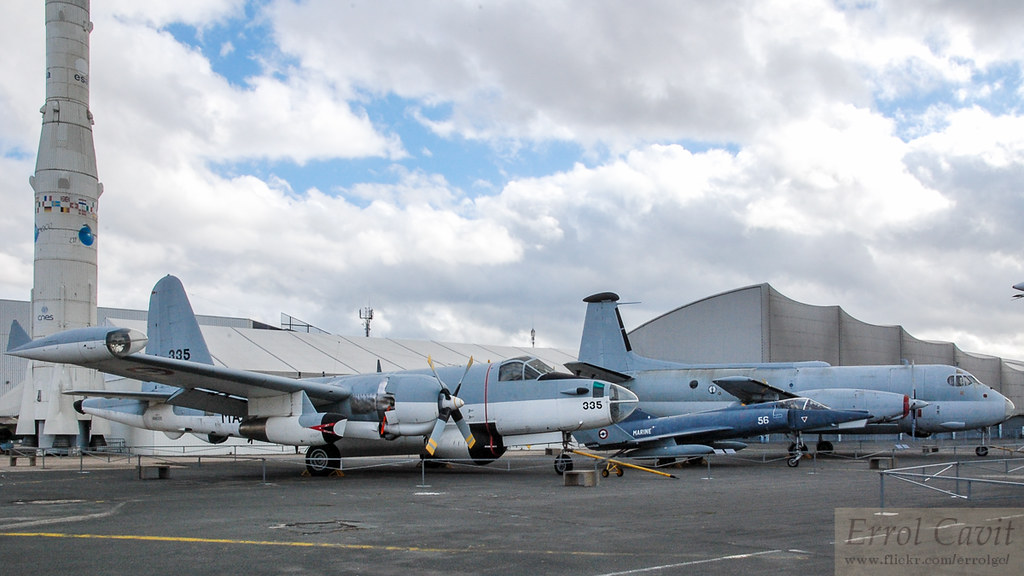 Maritime trio Maritime trio by Errol Cavit, on Flickr The first Rafale A  Rafale A Rafale A by Errol Cavit, on Flickr Heavy Metal 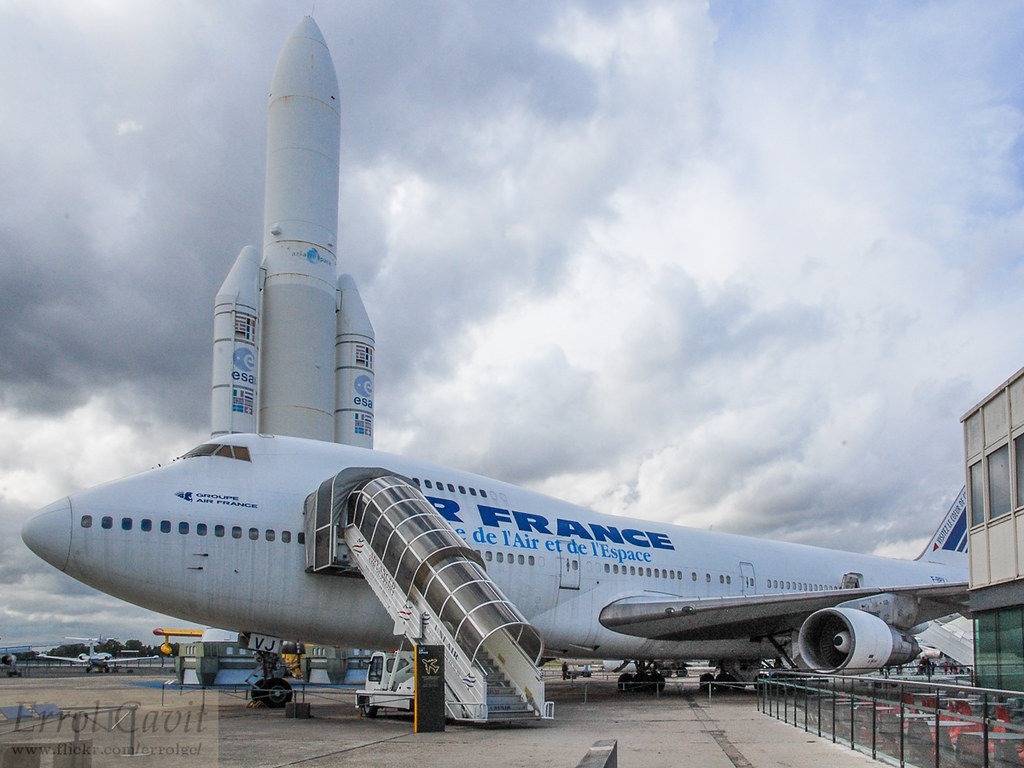 B747 and Ariane 1 B747 and Ariane 1 by Errol Cavit, on Flickr 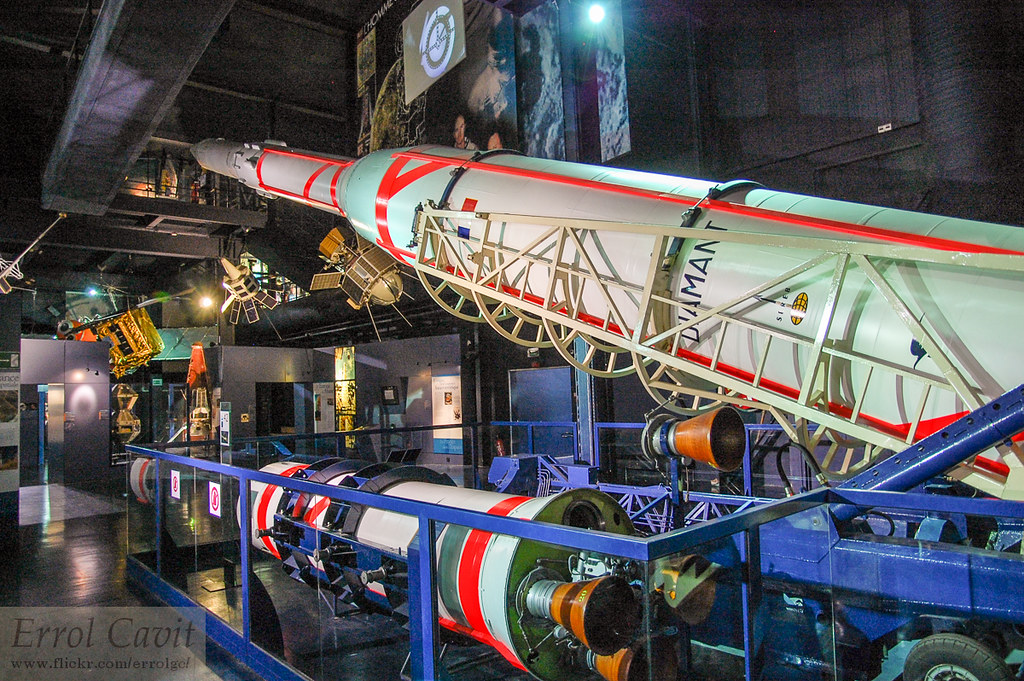 Diament satellite launcher Diament satellite launcher by Errol Cavit, on Flickr |
|
|
|
Post by shorty on Feb 21, 2016 16:08:08 GMT 12
|
|

